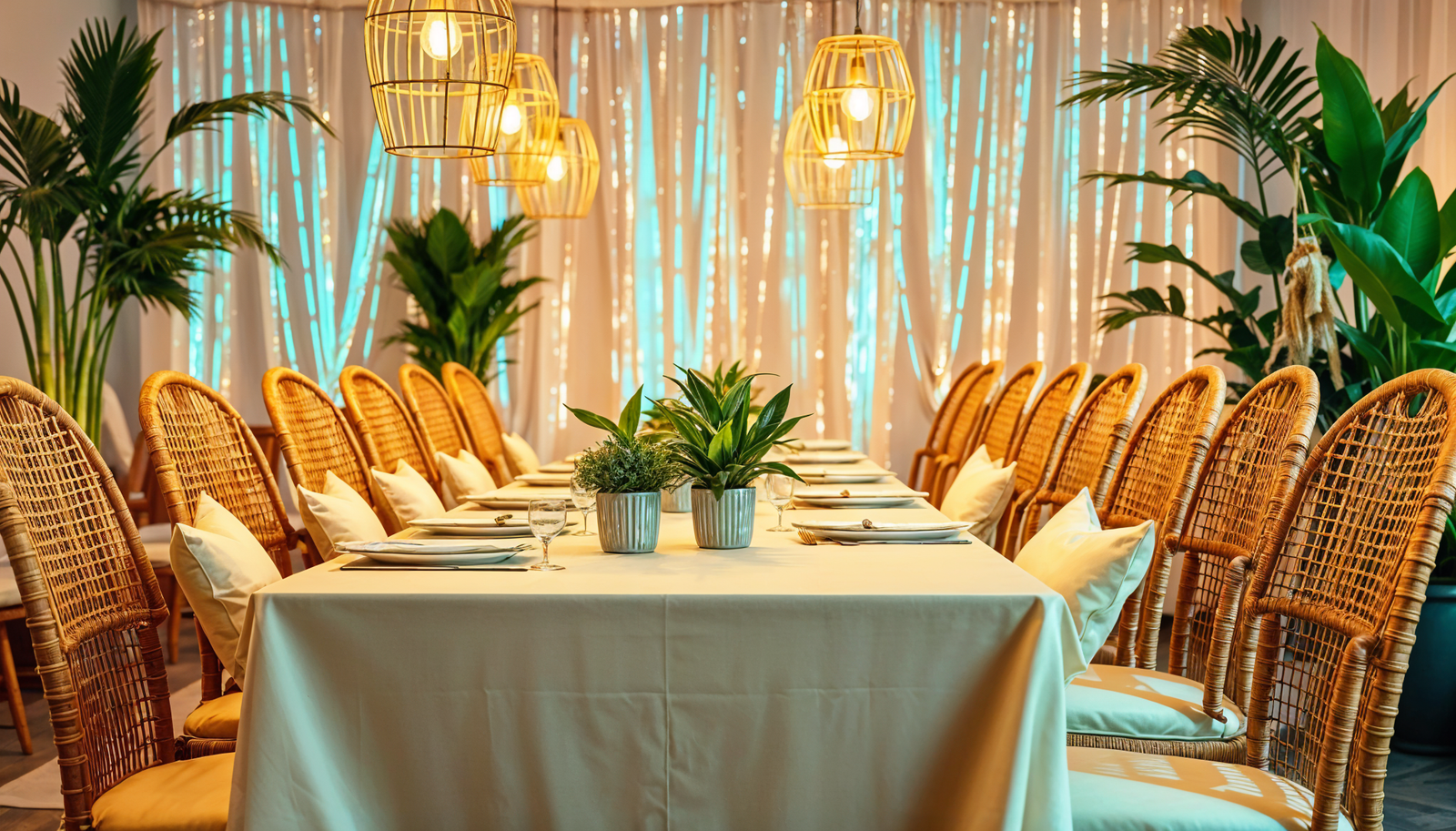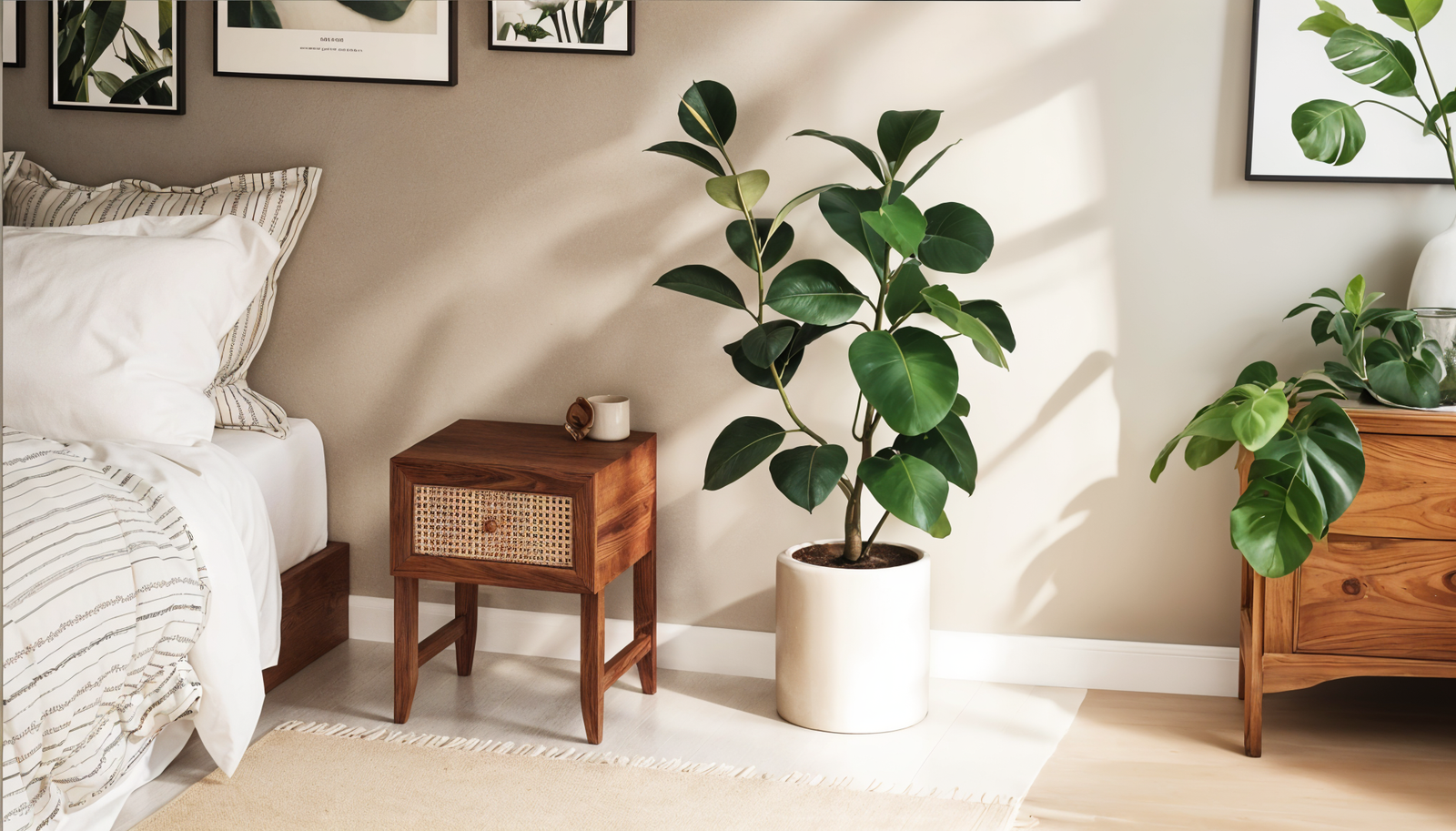🤍 Unmatched Quality, Authentic Craftsmanship
🤍 Unmatched Quality, Authentic Craftsmanship
🤍 Unmatched Quality, Authentic Craftsmanship
Welcome to our article on the comparison between mahogany wood and teak.
Both are highly sought-after woods in the furniture and home décor industries, known for their beautiful textures, colors, and distinctive grain patterns.
Whether you're considering a wooden teak dining chair from Mojo Boutique or a natural rustic bedside table or vintage-style nightstand, it's important to understand the differences and advantages of these hardwood options: mahogany vs. teak.
Mahogany wood boasts a deep reddish-brown color, while teak showcases a golden-brown hue.
Teak is renowned for its straight and slightly wavy grain pattern, whereas mahogany exhibits a linear grain.
Choosing between the two ultimately comes down to personal preference, availability, and budget.
Let's dive deeper into the unique qualities of each wood to help you make an informed decision.

As we continue our exploration, we'll examine the unique features, benefits, durability, appearance, price, and sustainability of mahogany wood and teak.
By the end, you'll be equipped with the knowledge needed to make an informed decision about your next wood furniture or décor purchase.
Stay tuned for the upcoming sections where we delve into teak's features and benefits, mahogany's unique qualities, its appearance and durability comparison, price and sustainability considerations, and the applications of mahogany.
We'll also discuss the advantages and disadvantages of mahogany.
In the conclusion, we'll provide a summary and offer assistance with sourcing the best teak and mahogany wood furniture through Mojo Boutique.
Several characteristics of teak wood make it a popular choice in the furniture and home décor industries.
Teak is a tropical hardwood that originated in Asia and is known for its exceptional durability and resistance to termites, acids, and rotting.
This is mainly due to its natural oil content, which also gives teak furniture its beautiful golden-brown color.
One of the main advantages of teak wood is its suitability for outdoor use.
The inherent durability and natural oil content make teak furniture highly resistant to weather conditions, making it ideal for patio furniture, garden benches, and even boat construction.
This means that teak furniture can withstand the test of time and maintain its integrity even in harsh outdoor environments.
While teak furniture requires proper maintenance to preserve its natural hue, it is relatively easier to restore compared to other types of wood.
Regular cleaning and the occasional application of teak oil can help maintain its shiny and new look, ensuring that your teak furniture remains as beautiful as the day you bought it.

| Teak | Mahogany | Oak | |
|---|---|---|---|
| Durability | High | Medium | High |
| Natural Oil Content | High | Low | Low |
| Outdoor Use | Yes | No | No |
| Maintenance | Regular cleaning Occasional teak oil application |
Extensive sanding and staining | Regular cleaning Waxing and polishing |
In comparison to other hardwoods like mahogany and oak, teak stands out for its high durability and natural oil content.
The table above provides a quick overview of the key differences between teak, mahogany, and oak in terms of durability, natural oil content, outdoor use, and maintenance requirements.
Mahogany wood is highly sought-after in the furniture industry due to its deep, rich color and appealing grain structure.
It has become a popular choice for indoor furniture, shelves, and cabinets, offering a touch of elegance and sophistication to any space.
The availability of mahogany wood has decreased over time, resulting in higher costs and the use of wood veneer as a cost-effective alternative.
When it comes to durability, mahogany wood is known for its strength and resistance to general wear and tear.
It can withstand the test of time and maintain its beauty for years to come.
However, it is important to note that mahogany is not suitable for outdoor use or shipbuilding, as it is not as resistant to weather and moisture as teak wood.
Maintenance is an important aspect to consider when owning mahogany furniture.
To keep it looking its best, regular sanding and staining are necessary.
This helps to restore the wood's color and protect it from scratches and other damages.
Although maintenance can be time-consuming, the results are well worth the effort.
Due to the decline in availability, finding high-quality mahogany wood can be a challenge.
It is important to work with reputable suppliers who source their wood responsibly.
The limited availability of mahogany also contributes to its higher cost compared to other types of wood.
There are various benefits of mahogany wood that have been known for centuries. These are the following
When it comes to comparing appearance and durability, there are some notable differences between mahogany wood and teak to consider.
These factors play a crucial role in determining which wood is best suited for your furniture and decor needs.
The grain pattern of teak wood is predominantly straight with some waviness, giving it a clean and uniform look.
In contrast, mahogany wood has a straight grain with occasional interlocking and circular rings, creating a more intricate and visually appealing pattern.
When it comes to durability, teak wood surpasses mahogany.
Teak is highly resistant to weather elements, termites, acids, and rotting due to its natural oil content.
This makes it an ideal choice for outdoor furniture and construction projects, as it can withstand the test of time.
On the other hand, while mahogany is a durable wood, it is more susceptible to damage from moisture and insects, making it better suited for indoor applications.
Both teak and mahogany require regular maintenance to maintain their shiny and new look.
However, teak is generally easier to restore, as it can be sanded and refinished to regain its original luster.
Mahogany, on the other hand, requires extensive sanding and staining to restore its beauty.

| Teak Wood | Mahogany Wood | |
|---|---|---|
| Grain Pattern | Straight with some waviness | Straight with occasional interlocking and circular rings |
| Durability | Highly durable, resistant to weather, termites, and rotting | Durable, but more susceptible to moisture and insect damage |
| Restoration | Relatively easy to restore with sanding and refinishing | Requires extensive sanding and staining for restoration |
When comparing teak and mahogany, one important factor to consider is the price.
Teak is significantly more expensive than mahogany due to its high demand and limited supply.
However, the durability and longevity of teak furniture justify the higher price, making it a worthwhile investment.
Another crucial aspect to consider is the sustainability of these woods.
Both teak and mahogany have been overexploited in the past, leading to concerns about their depletion.
To address this issue, some manufacturers hold certifications such as the Forest Stewardship Council (FSC) and the Indonesian Legal Wood (SVLK) certificates.
These certifications ensure that the wood used in the production of furniture comes from responsibly managed forests, promoting the protection and conservation of these valuable resources.
In addition to certifications, efforts are being made to utilize teak root and minimize material waste in the production process.
Teak root, which is typically discarded, is now being repurposed to create unique and sustainable furniture pieces.
Furthermore, manufacturers are implementing strategies to minimize material waste during the manufacturing process, reducing the environmental impact of furniture production.
| Comparison | Teak | Mahogany |
|---|---|---|
| Price | Higher | Lower |
| Sustainability | Efforts towards sustainability with certifications and utilization of teak root | Concerns regarding availability and responsible sourcing |
In comparison to mahogany wood and teak, teak may be more expensive, but its durability and sustainable sourcing make it a preferred choice for many.
However, mahogany remains a viable option for those seeking more affordable alternatives.
By considering the price and sustainability aspects, customers can make an informed decision when choosing between teak and mahogany.
Mahogany wood finds wide applications in various industries, particularly in the furniture industry.
Its rich color and appealing grain structure make it a popular choice for crafting high-quality furniture pieces.
Mahogany furniture adds a touch of elegance and sophistication to any space, whether it's a luxurious dining room set, a stunning bedroom suite, or a statement piece like a vintage-style nightstand.
Aside from furniture, mahogany is also utilized in the production of musical instruments, thanks to the resonance and excellent tonal qualities of mahogany wood.
Guitars, pianos, and other stringed instruments benefit from the warm, rich sound produced by mahogany.
Additionally, mahogany is commonly used in the creation of decorative wooden items, such as frames, windows, doors, and kitchen appliances.
Its versatility and durability make it suitable for a wide range of applications.
Mahogany's workability also makes it a favorite among artisans who specialize in carving and engraving.
The wood's hardness allows for intricate designs and detailed craftsmanship.
Whether it's a beautifully carved sculpture or an intricately engraved decorative panel, mahogany showcases the skill and artistry of the craftsmen.

| Furniture Industry | Musical Instruments | Decorative Wooden Items | Carving and Engraving |
|---|---|---|---|
| Furniture pieces for dining rooms, bedrooms, and more | Guitars, pianos, and other stringed instruments | Frames, windows, doors, and kitchen appliances | Sculptures, decorative panels, and intricate designs |
Mahogany wood offers a range of advantages that make it a popular choice for furniture and decorative items.
Despite these advantages, it's important to consider the potential disadvantages of mahogany wood.
Despite these disadvantages, mahogany remains a popular choice for a variety of applications due to its unique combination of beauty and durability.
Choosing between mahogany and teak wood for your project requires careful consideration of its characteristics, applications, advantages, disadvantages, and sustainability.

Now that you have read the above article, maybe you still have a couple of questions on this topic, so we will answer these questions below.
Teak furniture requires proper maintenance to maintain its natural hue. Regular cleaning and the application of teak oil or sealer can help protect the wood and prevent it from weathering.
Mahogany furniture requires extensive sanding and staining to maintain its appearance. Regular cleaning and polishing can help preserve the natural radiance of the wood.
Teak wood is significantly more expensive than mahogany wood due to its durability and scarcity. However, both woods have seen price increases as their availability has decreased over time.
Mojo Boutique offers a wide range of handpicked teak and mahogany wood furniture from qualified suppliers in Indonesia.
So, when it comes to choosing the right wood for your furniture and home décor projects, considering the benefits of teak and mahogany is crucial.
Teak offers exceptional durability, and its natural oil content makes it a great option for outdoor use.
On the other hand, mahogany's deep, rich color and appealing grain structure add beauty and charm to indoor furniture.
At Mojo Boutique, we understand the importance of finding the perfect wood for your needs.
That's why we offer a wide range of handpicked teak and mahogany furniture made by the local artisans in Indonesia.
Whether you're looking for a wooden teak dining chair, a natural rustic bedside table, or a vintage-style nightstand, we've got you covered.


